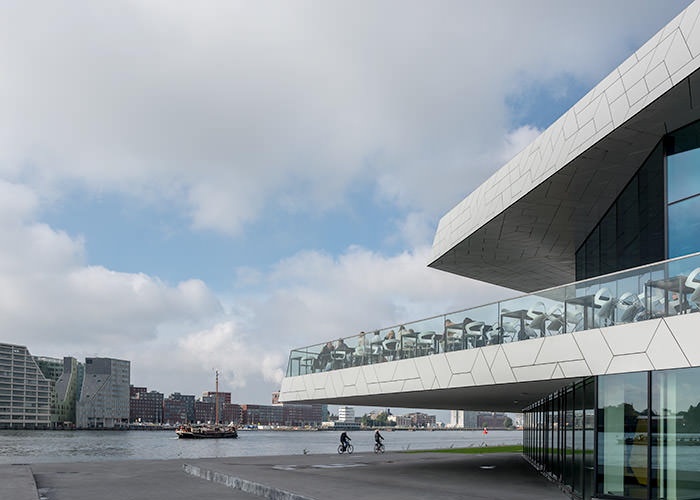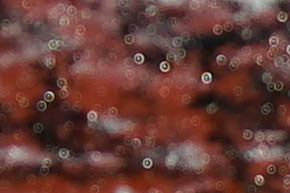Can I Convert a Nikon 18mm to 35mm Sigma Art
In terms of specifications, finish, image quality and cost we're dealing with a "game changer"; that's what nosotros wrote in our review of the Sigma 18-35 mm i.8 Art with a Catechism 650D. Would this lens would exist able to perform even better if you used information technology in conjunction with the 24 megapixel sensor sans moiré filter Nikon D7100?
And it does. Only the zoom range of the Sigma eighteen-35 mm Art is in terms of view angle slightly less than a 24-70 mm zoom lens on a camera with a full frame sensor. In addition, with the Sigma xviii-35 mm f/1.8 Art and the Nikon D7100 (with APS-C sensor), yous'll get pictures with epitome quality and bokeh that rival those of more expensive, heavier and larger lenses on a photographic camera with a full-frame sensor. That volition save you lot a lot of money, because total-frame cameras and good, full-frame lenses aren't cheap.
Sigma 18-35mm f/1.8 DC HSM A @ Nikon D7100

Sigma 18-35mm f/ane.viii DC HSM A @ 18mm, f/iv.8, ane/750 southward, 100 ISO
The angle of view (equivalent to a 29-53 mm zoom lens on a full frame photographic camera) and the loftier, constant f/1.8 effulgence make the Sigma 18-35 mm Art an ideal lens for many applications such equally concert-, holiday-, street-, wedding- or journalism-photography.
Construction
A bright lens manufactured to professional standards, in terms of size and weight, cannot be compared with a standard kit lens. With a length of 12 inches, a filter size of 72 mm and a weight of 810 grams, the Sigma 18-35 mm Art makes a combination with an APS-C body that for an amateur photographer volition take some getting to become used to.
For a professional photographer who'due south accustomed to a full-frame photographic camera with a 24-lxx mm zoom lens, its length and weight just correct.
The matte black appearance and loftier quality workmanship of the lens are the same as those of the Sigma Art 35 mm f/1.4 lens. The use of plastic, "Thermally Blended" (TSC), for the lens housing keeps the weight of the Sigma eighteen-35 mm Art somewhat express.
Automobile focus
The AF is of the USM-type, which not only results in fast and precise focusing, but information technology as well offers the ability to manually override the AF at any time. The AF is accurate, silent and very fast. Probably partly due to the high brightness, the AF is also authentic in low calorie-free.
The Sigma 18-35 mm f/1.8 Fine art features internal focusing, meaning the length of the lens does non change and the filter mount does not rotate while focusing. Also with zooming in or out, the length of the lens remains unchanged. Especially when you close ups, where the front lens can get within eight cm of the subject, this is quite prissy.
Sharpness Sigma xviii-35 mm f/ane.8 DC HSM Fine art
When it comes to sharpness the Sigma 18-35 mm f/1.8 Art is among the very best in the category of lenses with a view angle of equivalent to a 28 mm, 35 mm or l mm lens on a photographic camera with a full-frame sensor. The sharpness at maximum aperture is already very high. That'due south remarkably good, because vivid lenses at total aperture are usually somewhat fuzzier. After two stops stopping downward, an even higher heart sharpness is reached also as the optimum sharpness at edges and in the corners. In terms of sharpness, with the Sigma 18-35 mm ane.eight Art you're free to cull all the apertures between f/one.eight and f/11. That's unique for a zoom lens.
Sigma USB dock
For 55 euros you can buy a USB dock with a Nikon mount for the Sigma 18-35 mm f1/8 Art, with which y'all tin can download firmware updates for this lens. You tin can as well customize the combination of your photographic camera with the Sigma eighteen-35 mm f/1.8 Art with four unlike distances. This pick is peculiarly attractive for high resolution lenses with higher effulgence than f/2.8, if you lot want to get the highest possible resolution. Our experience with the Sigma 18-35 mm Fine art can exist found in the second office of our Sigma USB dock review.
Sigma 18-35 mm 1.viii Art @ eighteen mm (HDR-images): When merging multiple shots into ane HDR epitome, chromatic abnormality is often more visible than in an ordinary picture. The Sigma Art lenses are attractive for HDR photographers, not only because of their insensitivity to flare, but likewise because of the low chromatic abnormality.

Sigma 18-35 mm 1.viii Art @ 18 mm (HDR-image) When merging multiple images into one HDR image, chromatic aberration often becomes more visible than in a regular photo. The Sigma Art lenses are bonny for HDR photographers. Not simply because of the insensitivity for flare, just besides because of the low chromatic aberration.
SIGMA Mount Conversion Service
There's is an interesting debate over whether the camera or the lens is the nearly important/most distinguishing instrument for a photographer. Sigma sees the choice of the lens as the center of the photography. If you ever desire to switch to another camera make, Sigma for the lenses from the Contemporary (C)-, Fine art (A)- or Sports (Southward)-lines have a unique feature. With the mount conversion service, your own lenses can be equipped with a lens mount from a different brand. The customization, which extends to exclusive features per camera make, such as the Os part, are applied past Sigma in Aizu (Nippon), then that the lens works optimally on the new body.
The mount conversion service is not guaranteed and is not inexpensive. The mount conversion service for the Sigma 18-35 mm Art costs € 200.00, including sales revenue enhancement. This allows y'all to go along the lenses with which you are already familiar, because buying a new lens is essentially more expensive.
Vignetting
Given the high effulgence of the Sigma 18-35 mm Art, it'southward no surprise that there is whatever visible vignetting at maximum aperture. Later on 2 stops stopping downwards, merely at f/4 then, the vignetting completely disappears. Both manually and using lens correction profiles, vignetting is simple and efficient to correct in Lightroom.
Vignetting carries very little weight in the final tally of our reviews. We endeavor to correct the scores with: "What you see is what you lot become". And many photographers aren't bothered by vignetting, or fifty-fifty discover it cute.
Distortion
The distortion of the Sigma 18-35 mm Art ranges from light barrel-shaped at a focal length of 18 mm to lite pincushion-shaped at a focal length of 35 mm. This behavior is feature for a zoom lens with this focal length range.
To correct distortion in RAW files is piece of cake using lens correction profiles in Photoshop or Lightroom. The scores for baloney for the Sigma xviii-35 mm i.8 Art at all focal lengths are higher than nine. The final score after correction for distortion would be 0.vi higher than at present.
 Lens correction profiles in Lightroom: Ordinarily, Lightroom automatically recognizes a lens. Click on "Enable Profile Corrections", then the brand, model and the available lens correction profile automatically appear. With the Sigma xviii-35 mm i.8 Art this information does not appear (in Lightroom version 5.2). Fortunately, the lens correction profile is available. All you have to do is to select Sigma as the brand. The remaining information will appear and both the baloney and the vignetting in RAW files can be corrected with a single click.
Lens correction profiles in Lightroom: Ordinarily, Lightroom automatically recognizes a lens. Click on "Enable Profile Corrections", then the brand, model and the available lens correction profile automatically appear. With the Sigma xviii-35 mm i.8 Art this information does not appear (in Lightroom version 5.2). Fortunately, the lens correction profile is available. All you have to do is to select Sigma as the brand. The remaining information will appear and both the baloney and the vignetting in RAW files can be corrected with a single click.
Bokeh
Both background blur-mistiness and foreground blur in terms of grapheme are strongly reminiscent of the OOF ("Out of focus") of a lens on a camera with a full-frame sensor. In a higher place you lot can meet a partial enlargement of a flick made at a 24 mm focal length and f/1.viii. At this focal length, you don't get such a butter-soft bokeh like with a telephoto lens, just the combination of sharpness of the bailiwick and the groundwork blur are sensationally good. The Sigma 18-35 mm Art provides a very prissy circular bokeh of a vivid lite source in the groundwork, as you can encounter in the image below.
Bright lenses nearly all suffer from longitudinal chromatic aberration, which is also called color bokeh. You'll get regal fringing behind the focus bespeak and green edges in front of the focus indicate. Color bokeh only occurs with very vivid lenses, and it disappears by stopping down. At f/2.8 or smaller you lot don't see it. On the right, y'all tin can see a test shot fabricated at f/one.8 for the detection of color bokeh. Class.

Flare
With the Sigma 18-35 mm f/1.8 Sigma'due south Art, the designers surpassed themselves in terms of flaring. If there is a bright light source but outside image field, you will accept no problems with flare, never mind whether you lot used the included lens hood. If you are shooting straight into the sun, so with the dominicus in total frame, then at that place is a small zone around the sun where flare can exist seen. With effort, we were able to notice in our test shots a rainbow-like ghost, which we circled in red in the paradigm cutout on the right. Where flare's concerned, we currently don't know about any meliorate zoom lenses. At that place are a ton of lenses with a fixed focal length that are more bothered by flare and ghosts. That seems to me an important consideration if you like HDR, night photography or concert photography.
Chromatic abnormality Sigma xviii-35mm f/1.viii DC HSM Art
Lateral chromatic abnormality, magenta and blue-green edges at potent contrast transitions in the corners of the prototype, y'all will almost non notice with this lens. We accept the worst example that we constitute in our practice shots, shown hither.
Determination Sigma eighteen-35mm f/ane.8 DC HSM Art review
Pros
- Zoom lens with unparalleled high brightness
- Very high paradigm quality
- Qualitatively equivalent to, or meliorate than, lenses with a fixed focal lengths
- Dainty bokeh/groundwork mistiness: equivalent to full frame
Cons
- Somewhat limited zoom range
- Visible baloney at the extremities of the zoom range
Because nosotros had previously reviewed the Sigma 18-35 mm i.eight Art on a Canon 650D, our expectations were high. Our test results for the Sigma 18-35 mm Art with a Nikon D7100 are in line with our earlier test for most image quality backdrop. The resolution is, thanks to the Nikon D7100, even higher than in our previous test of the Sigma 18-35 mm 1.8 Art on a Canon 650D. If you correct distortion of the Sigma 18-35 mm 1.viii Fine art in RAW files using the lens correction profiles for RAW files in Lightroom, then the scores for distortion at all focal lengths become a 9 or higher, and the final score falls 0.six higher than the current final scores. With that, the combination of a Nikon D7100 with the Sigma 18-35 mm 1.8 Art in terms of picture quality beats almost all-DX, FX and both zoom and fixed focus lenses with a view angle equivalent to a 28 mm, 35 mm or fifty mm focal length on a camera with a full frame sensor. Wow.
Source: https://camerastuffreview.com/en/sigma-18-35-art-review-nikon-mount/
0 Response to "Can I Convert a Nikon 18mm to 35mm Sigma Art"
Post a Comment